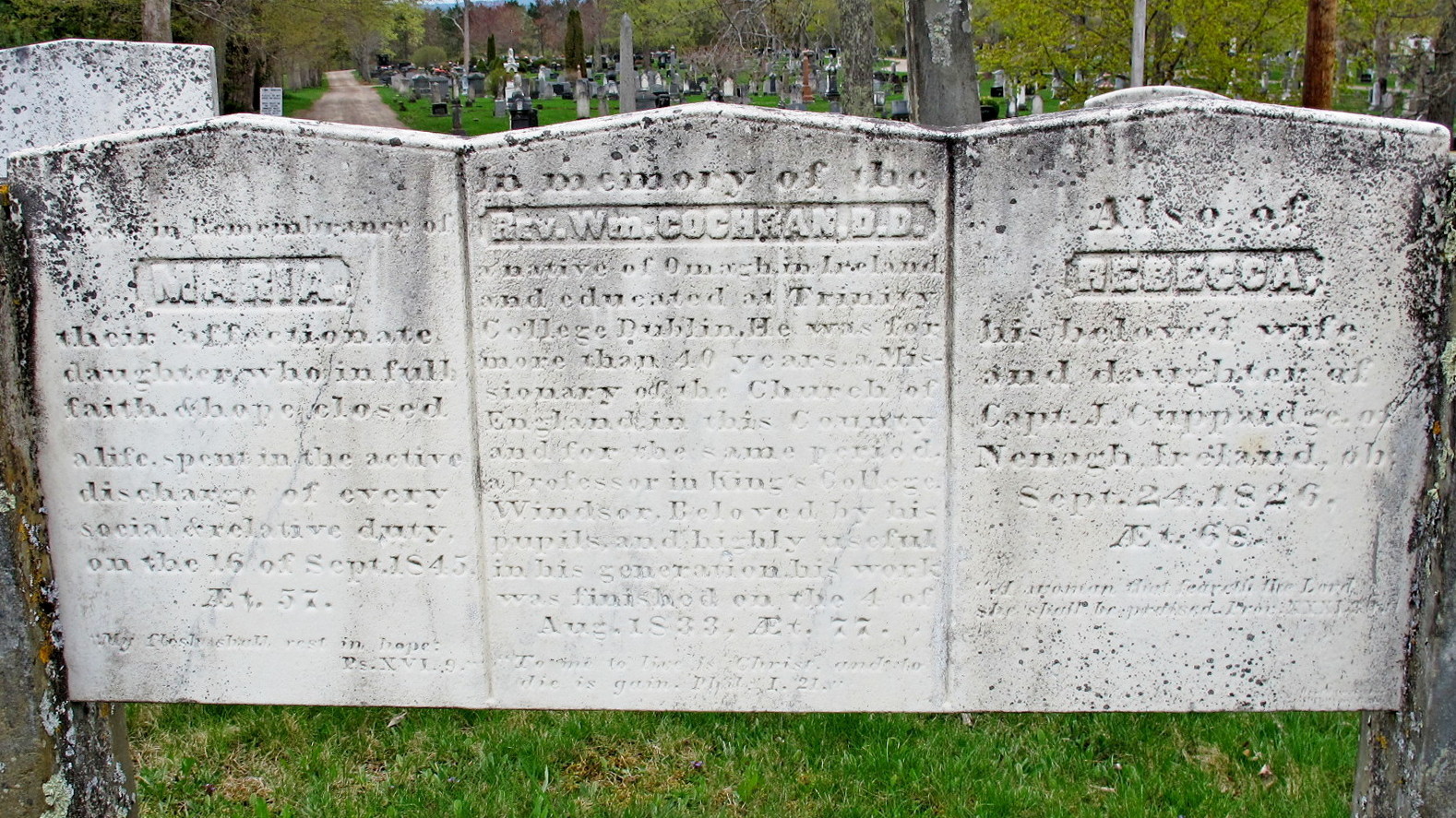The book, the full title of which is "
Sketch of the old parish burying ground of Windsor, Nova Scotia: with an appeal for its protection, ornamentation and preservation", was written by
Henry Youle Hind and first published in 1889 by Jas. J. Anslow, at the "Hants Journal" Office in Windsor, NS and republished 1923. While several copies of the original 1889 book exist, a
pdf of the book is also available today.
Henry Youle Hind was a noted Canadian geologist and explorer born in Nottingham, England who immigrated to Toronto Canada, in 1846. Hind led expeditions to explore the Canadian prairies in 1857 and 1858, exploring the Red and Assiniboine River valleys in 1857, and in 1858, the Assiniboine, Souris, Qu'Appelle, and South Saskatchewan River valleys. In the fall of 1866 the Hind family moved to Windsor and from 1884 onward he became focused on the local history of Windsor, one of his published works on the Windsor area being this book. Youle died August 8, 1908, aged 85, at Maplewood, Nova Scotia.
This is a reproduction, published by Ulan Press on August 31, 2012 and available in hardcover and paperback. Out of use for five years or less when the initial book was published in 1889, the burying ground was already considered an important historical resource, partly for the many notable citizens buried there and partly for the ornately carved headstones, some carved by the most notable stone carvers of their time.
In use from 1771 (or 1776) to 1887 (or 1884). Historic Places Canada uses the former dates, while the cemetery's sign uses the latter. One of the oldest protestant cemeteries in Canada, the Old Parish Burying Ground was once the churchyard burial ground of Christ Anglican Church, which was located in what is now the Old Parish Burying Grounds. Built in 1771, the first Christ Church was designed by the first Anglican Bishop of Nova Scotia, Charles Inglis. A new church was built on the burying ground between 1788 and 1790 but burned in 1892 but was not replaced, as a new Christ Church had been completed closer to the centre of town in 1884. That second church and the burying ground were consecrated in 1826 by the son of Bishop Inglis, Reverend John Inglis, third bishop of the Diocese of Nova Scotia.
King’s Collegiate School was built in Windsor in 1788 and King’s College the following year. As a result many presidents and professors of the college are buried here, including its first president,
William Cochran.

Old Parish Burying Ground
DESCRIPTION OF HISTORIC PLACE
The Old Parish Burying Ground is located on the east side of King Street across from Maplewood Cemetery approximately 100 metres north of the intersection of King Street and Highway 14 in the town of Windsor, NS. The gravestones and land are included in the municipal designation.
HERITAGE VALUE
The Old Parish Burying Ground is valued as the main burial ground for the town of Windsor until 1887 and as the final resting place for many prominent Windsor families. The cemetery also contains gravestones carved by early Nova Scotian stone carvers.
In 1779 land for a church and burial ground was donated by the Honourable Michael Francklin, former Lieutenant Governor of Nova Scotia. The land was the site of the original Anglican church in Windsor, built in 1771 and the rector of this church, Rev. Joseph Bennett, is buried here. The oldest surviving gravestone marks the death of Rachael Kelley on January 27, 1771. A second church was built on the same site between 1788 and 1790. The church and burying ground were consecrated in 1826 by the Right Reverend John Inglis, the third bishop of the Diocese of Nova Scotia and son of Bishop Charles Inglis. This church burned in 1892 and was not replaced since Christ Church, further north on King Street, had been completed in 1884.
Prominent people buried in here include Isaac Deschamps, the fourth Chief Justice of Nova Scotia; Winckworth Tonge, grandson of one of the original land grantees; and Susanna Francklin, wife of Hon. Michael Francklin. In addition, several presidents and professors of King's College are buried here including William Cochran, its first president.
Beyond the genealogical information found in the Old Parish Burying Ground, many of the gravestones are excellent examples of colonial era stone carving and are decorated with traditional symbols including hands in various positions, urns, and cherubs. Several stones were made by a carver simply known as J.W. as well as stones by James Hay of Halifax, the Seaman Family and a cast iron marker made by the William Johns Foundry in Halifax. Some of the stones are signed by the stone carver while others can be identified by the style of carving.
The carver known as J.W. is believed to be James Wood of Windsor and are carved of slate possibly quarried at Gore. It is believed the carver’s use of symbols was “for visual effect” rather than as religious symbols. J.W. often proudly proclaimed his work by including his signature on the top of the stone in the largest lettering.
From Historic Places Canada